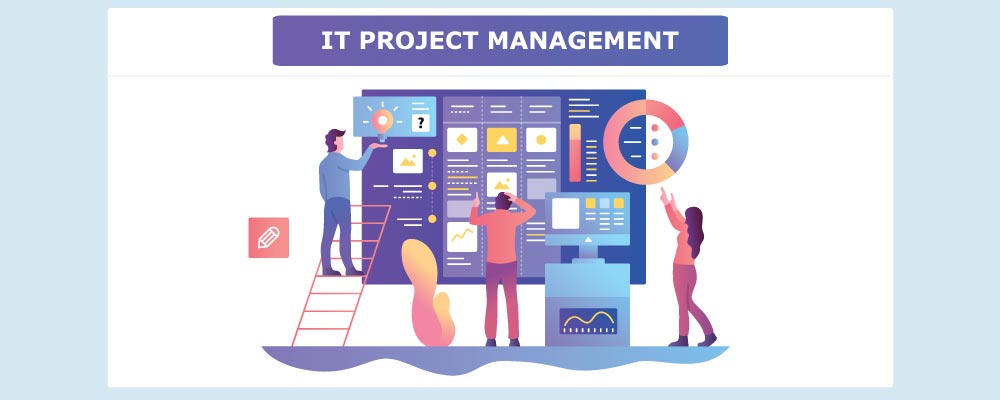IT Project Management: Successfully Navigating Technology Initiatives
In the rapidly evolving world of technology, effective project management is essential to ensure the successful implementation of IT projects. IT project management involves planning, organizing, and controlling the resources and activities required to deliver technology solutions within specified constraints. From software development to infrastructure upgrades and system implementations, IT project management plays a critical role in delivering projects on time, within budget, and meeting stakeholders’ expectations. Let’s explore the key aspects of IT project management and the strategies for successful project execution.
Key Aspects of IT Project Management
- Project Initiation: In this phase, the project’s objectives, scope, and feasibility are defined. A project charter is created, outlining the project’s goals, deliverables, timeline, and budget. Stakeholders are identified, and initial requirements gathering takes place.
- Project Planning: The planning phase involves creating a detailed project plan that outlines tasks, milestones, dependencies, and resource requirements. The project manager identifies risks and develops risk mitigation strategies. Communication and stakeholder engagement plans are established, ensuring clear lines of communication throughout the project.
- Resource Management: IT projects require skilled resources, including project managers, developers, designers, and testers. The project manager must effectively allocate resources, manage their workload, and ensure they have the necessary skills to complete their assigned tasks. Resource management also includes procuring hardware, software, and other necessary tools.
- Risk Management: Identifying and managing risks is crucial for the success of IT projects. The project manager conducts risk assessments, develops mitigation strategies, and establishes contingency plans. Regular monitoring of risks and timely response to any issues that arise is essential to minimize project disruptions.
- Project Execution: During the execution phase, project tasks are performed according to the project plan. The project manager coordinates activities, manages timelines, monitors progress, and ensures that deliverables are being produced as expected. Effective communication and collaboration among team members are critical for smooth execution.
- Quality Assurance: IT projects require stringent quality assurance measures to ensure that the delivered solutions meet the required standards. Testing, debugging, and quality control processes are employed to identify and resolve defects. User acceptance testing is conducted to ensure that the solution meets user requirements and expectations.
- Change Management: IT projects often involve changes to existing systems or processes. Change management ensures that stakeholders affected by the project are adequately prepared for the changes and that proper training and support are provided. Change requests are evaluated, approved, and implemented with minimal disruption to project timelines.
- Project Closure: The project closure phase involves finalizing and documenting project deliverables, conducting a post-implementation review, and transitioning the project’s outputs to operations or maintenance teams. Lessons learned from the project are captured for future reference and to improve future project execution.
Strategies for Successful IT Project Management
- Clear Communication: Effective communication is essential for project success. The project manager must establish clear channels of communication, ensure that stakeholders are informed about project progress, and address any concerns or issues promptly. Regular status updates, meetings, and documentation should be used to facilitate effective communication.
- Agile Project Management: Agile methodologies, such as Scrum or Kanban, can be effective for managing IT projects. They promote iterative development, frequent collaboration, and adaptability to changing requirements. Agile methods enable flexibility and foster a collaborative environment among team members.
- Stakeholder Engagement: Engaging stakeholders throughout the project lifecycle is crucial. Regularly seeking input, managing expectations, and involving stakeholders in decision-making increases their ownership and commitment to the project’s success.
- Risk Management: Proactive risk management is vital to minimize the impact of potential project risks. The project manager should identify, assess, and prioritize risks early in the project lifecycle. Mitigation strategies and contingency plans should be developed and continuously monitored.
- Robust Project Tracking and Documentation: Accurate and up-to-date project tracking is essential to monitor progress, identify deviations from the plan, and make informed decisions. Maintaining comprehensive project documentation ensures that project information is readily available and accessible to team members and stakeholders.
- Continuous Improvement: Project managers should encourage a culture of continuous improvement by conducting post-project reviews and capturing lessons learned. Analyzing project successes and challenges helps refine project management practices and improve future project execution.
Conclusion
IT project management plays a crucial role in successfully delivering technology initiatives. Effective project initiation, planning, execution, and closure are essential for meeting project objectives and stakeholders’ expectations. Clear communication, stakeholder engagement, risk management, and adherence to best practices are key strategies for successful IT project management. By leveraging these approaches, organizations can ensure the smooth execution of IT projects, maximize benefits, and drive technological advancements to support their business goals.
Share this content:


